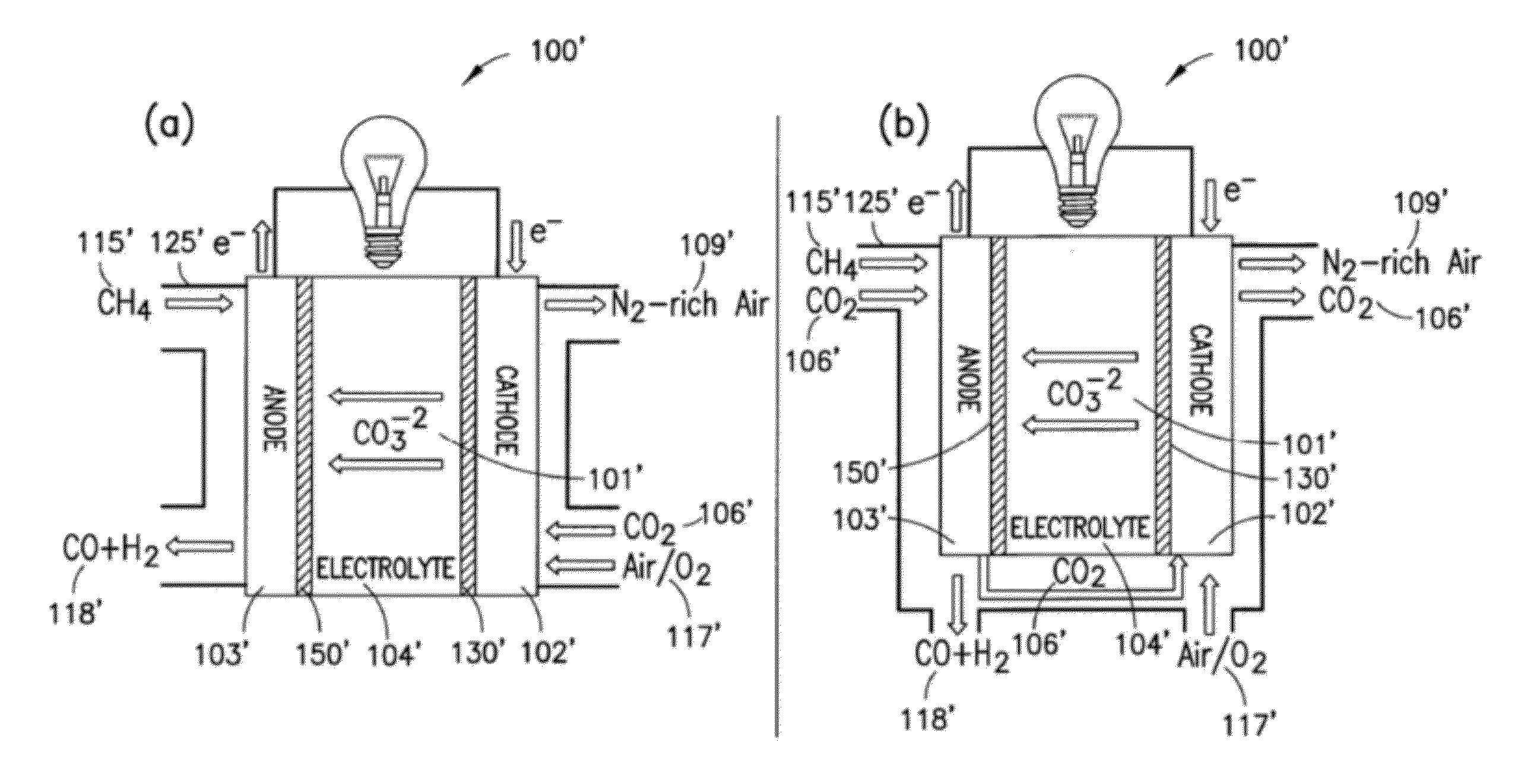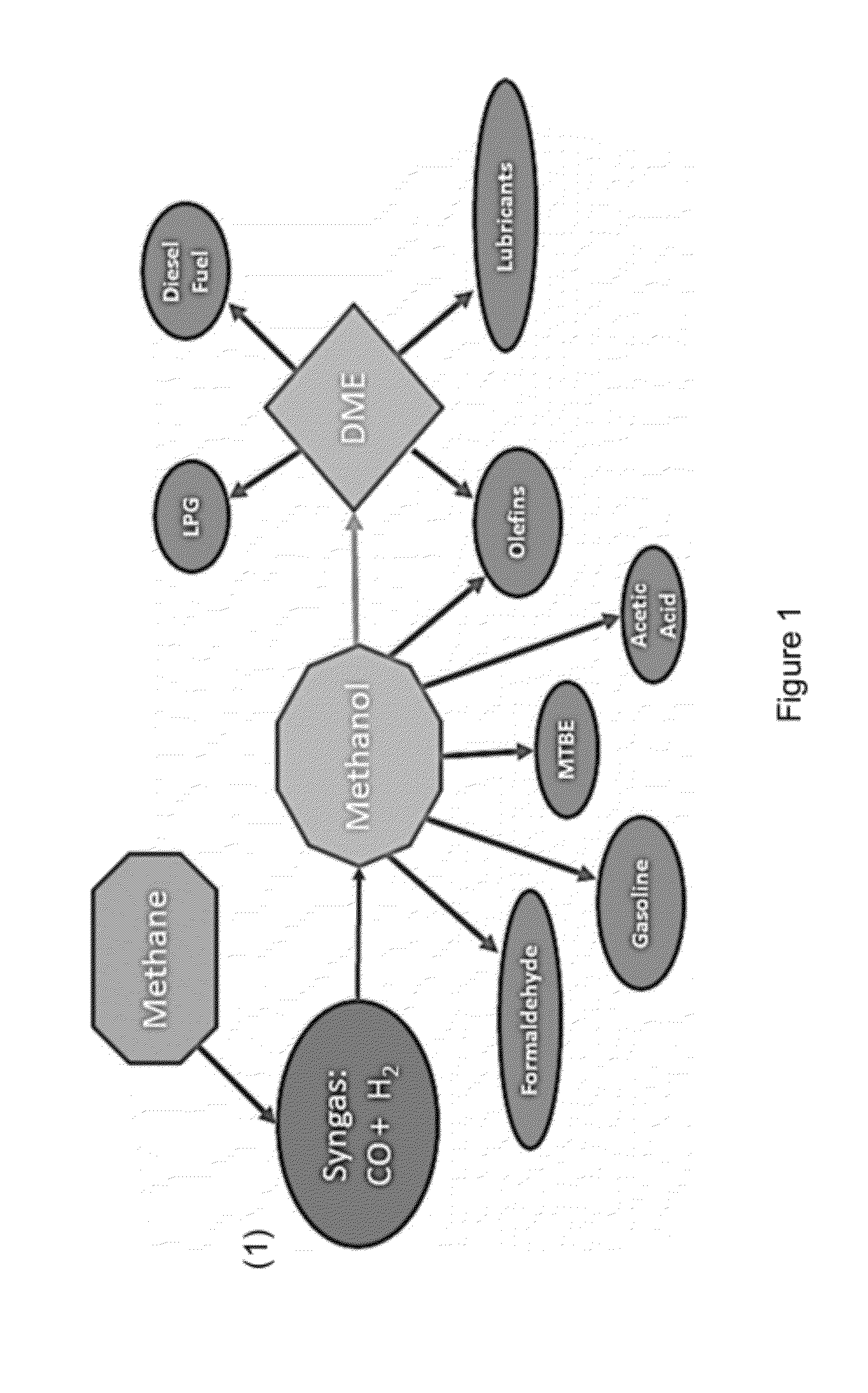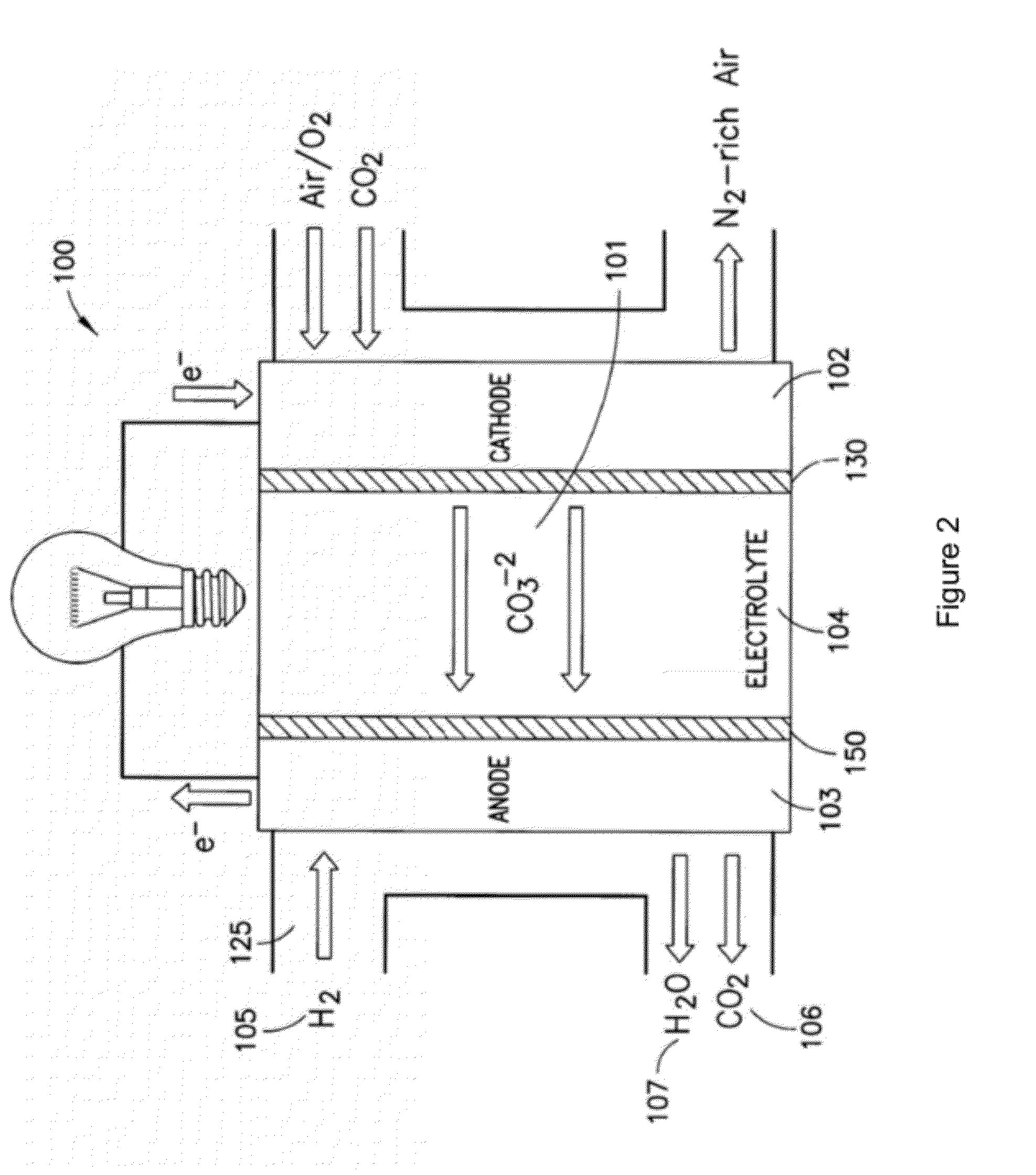Electrochemical Reactor for CO2 Conversion Utilization and Associated Carbonate Electrocatalyst
a technology of electrocatalyst and electrochemical reactor, which is applied in the direction of metal/metal-oxide/metal-hydroxide catalyst, cell component, physical/chemical process catalyst, etc., can solve the problems of lowering consumer and market confidence, increasing petroleum prices and volatile prices, and cost and uncertainty in oil prices. , to achieve the effect of low cos
- Summary
- Abstract
- Description
- Claims
- Application Information
AI Technical Summary
Benefits of technology
Problems solved by technology
Method used
Image
Examples
Embodiment Construction
)
[0078]The present disclosure provides advantageous electrochemical reactors. More particularly, the present disclosure provides for improved electrochemical reactors that operate on the carbonate cycle at extremely low temperatures (e.g., less than about 50° C.), thereby allowing operation in as many as three (3) modes, namely as: (i) a room temperature carbonate fuel cell; (ii) an electrochemically assisted CO2 membrane separator; and (iii) a CO2 conversion device. The present disclosure further provides an electrocatalyst with the ability to selectively form carbonate anions over hydroxide anions under fully humidified conditions. The disclosed systems / catalysts have wide ranging application, e.g., in connection with fuel cells, batteries, heterogeneous transesterification of oils for biodiesel, electrochemically-assisted carbon sequestration, reduction of nitrous oxides (e.g., in automotive pollution prevention), and water treatment and electrolysis.
[0079]The present disclosure ...
PUM
| Property | Measurement | Unit |
|---|---|---|
| temperature | aaaaa | aaaaa |
| temperature | aaaaa | aaaaa |
| temperatures | aaaaa | aaaaa |
Abstract
Description
Claims
Application Information
 Login to View More
Login to View More - R&D
- Intellectual Property
- Life Sciences
- Materials
- Tech Scout
- Unparalleled Data Quality
- Higher Quality Content
- 60% Fewer Hallucinations
Browse by: Latest US Patents, China's latest patents, Technical Efficacy Thesaurus, Application Domain, Technology Topic, Popular Technical Reports.
© 2025 PatSnap. All rights reserved.Legal|Privacy policy|Modern Slavery Act Transparency Statement|Sitemap|About US| Contact US: help@patsnap.com



